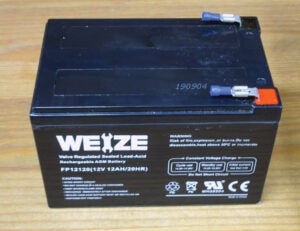
This may well be the most ambitious project I’ve tackled in the last 35 years of writing my KITPLANES® columns. I’m going to unplug my own hangar from the commercial power grid and run it completely from solar power. No cheating with gas generators. (I think using the gas generator once in a blue moon as a backup isn’t a bad thing after a month of stormy weather, but only to run an external charger for the primary battery supply. It’s not to be used for normal operation—except perhaps for the annual compression leak-down test.)
I’m thinking this project will probably be a column every other month for the next six months (three columns). I will do it all from parts available to you from the usual suspects: Harbor Freight, Mouser, DigiKey and other folks who will sell you parts and pieces in onesie-twosies. Probably some stuff from offshore that you can source from Amazon and the like.
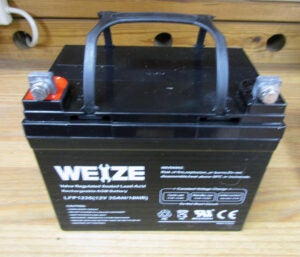
When starting a project like this, it is good to sit back and contemplate the design, rather than going off on a tangent trying this and that and cobbling the system together. So, given that we all have pretty well the same requirements, let’s enumerate the things we need to run from our solar system.
- I’m going to put a target of $500 to do the whole conversion.
- I’d like to stay in the cheap world of 12-volt batteries. And since most of our steeds run from either a 25- or 35-amp-hour 12-volt battery, I’m going to design around those two varieties. In general, we can scrounge used aircraft batteries that have a little bit of life left in them and run them in parallel to get more life from them. Or there are brand-new, inexpensive ($50 or so) non-aviation glass mat (AGM) batteries in this range. Need more power or more time? Just run a few of them in parallel.
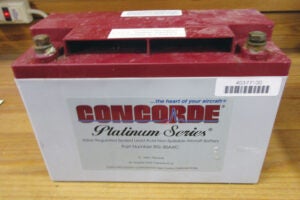
The 35-amp-hour battery that was resurrected from near death by the Harbor Freight recharger we talked about in the May 2018 issue (“Harbor Freight Leads the Charge!”). Used in parallel with the workhorse above, it gives nearly two weeks of full-light workdays or a couple hours of work with the compressor used for engine leak-down testing. - Hangar overhead lights are a must. I see making 12-volt “fluorescent replacements” similar to the LED striplight technique I used in my KITPLANES® December 2019 column (“We Shall Be Led Into the Light”). However, instead of using PVC, I’ll probably use 8-foot-long sections of thin plywood to mount the light strips on. Maybe not. We’ll see.
- Compressed air is a must. Two choices—there are inexpensive 12-volt compressors, but they take a long time to build up a small amount of pressure. I need a fair amount of 80-psi air to do the compression leak-down test on the engine, so I’ll do an experiment to see whether using a small 12-volt compressor with an accumulator tank or using a 110-volt AC inverter to run a medium-size regular compressor is the correct compromise.
- Small battery-operated hand tools (drills, soldering irons, Dremel tools and the like) and other devices like flashlights that can use rechargeable batteries are going to be necessary. The tools’ battery chargers require 110 AC, so that tilts the table toward the AC inverter even further.
- The “hangar radio” will generally be a 12-volt junker airplane radio that has a 110-volt battery supply for power. We can now bring that radio back to 12 volts directly.
- Refrigerator: Fuhgettaboutit unless we can find one of those cheap 12-volt automotive chilling boxes I’ve seen from time to time on late-night TV ads. Call them adult beverages cooling containers if you will.
- I’m sure that somewhere there is a 12-volt shop drop cord with an LED bulb, but I haven’t been able to find one. I’ll do a deeper search and see what I can find.
- There needs to be a tap for a charger for the aircraft battery from the system. That is going to be important because expensive aircraft AGM batteries do not lend themselves to ham-handed charging design. A $300 lump of lead converted to electrons will break the budget if we mess this one up.
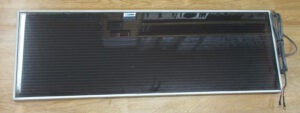
Given all these wants and wishes, there has to be some sorting out of what we will need to make this system work. You’ll also need to decide whether you want this system to work 24/7/365, twice a week, twice a month or some other combination.
It is also true that solar panels do not deliver constant voltage or current. The voltage and current they deliver is totally dependent on how much sunlight falls on the panel, the temperature and the cloud cover. So, it is dependent on the engineer to design a 12-volt battery charger that takes a wildly varying amount of wattage (volts x amps) that the solar panel delivers and converts this power efficiently into volts and amps that the battery can store. In general we call this a constant-power circuit.
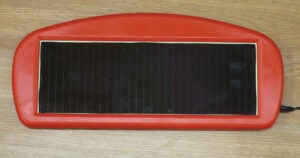
It is also true that solar panels need to be “adjusted” four times a year for optimum power (see “Sunshine Comes Softly Through My Solar Panel Today,” February 2008). I’m not quite sure right now how to do that, but I have the feeling that I’ll know pretty well when this project is all over.
Would it also be a good idea to back up our solar power source with a wind generator? Most airports I’ve been to have a goodly amount of wind since they are often in flat, unprotected areas. What would that generator look like? And can we make it from tin cans, chewing gum and baling wire or by using a 12-volt computer cooling fan as the power source?
Is it possible to use the same charging control circuit for the small 1.5-watt solar panel and the large 25-watt panel? I think so, but that is just more research.
Honestly, I don’t know what the final design is going to look like. Wernher von Braun said that, “Research is what I am doing when I don’t know what I am doing.” I just know that I’m going to put together a hangar power project for you that is the best available anywhere.
By Oshkosh of this year, I ought to be able to make the traditional Monday morning of the first-week forum session a real report on the entire system, solar cells to inverters. I hope to see you all there.
Along the way I may just delve a month or two into other interesting things like a cheap and dirty audio panel for less than $25 and stuff like that. Hang on—it’s going to be an interesting ride.
Until then…Stay tuned…





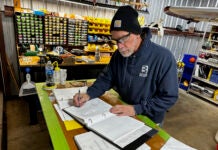

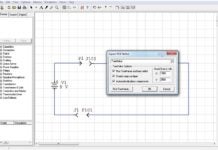






Solar powered hangar.
Yep, seemed like a nifty idea. After the power company x4 ed my minimum I said enough is enough.
Bought 2 x 100 watt solar panels on sale at Home Depot for $100 each. They don’t ever put out 200 watts!
Next I bought 4 deep cycle golf cart batteries. $87.00 each = $350.
I had a 1000 watt invertor for my 4 led fixtures, they were 4 x $37.00 = $136.
I bought a 3000 watt invertor for $360.00 but it still wouldn’t start my 1 HP compressor, apparently an electric motor NOT under load can take up to four times its rated amps to start.
New smaller compressor 120 volts piggybacked on my “big” compressor for surge volume cost $480.
Soooo,
Now we are over $1500 and it is some major compromises.
IT IS ALL ABOUT THE STORAGE/BATTERIES.
Doubling the number of batteries would help or going to lithium’s, but the cost and my experience with $400 Li batteries for my airplanes is not good. They tend to fail 1 year after the one year warranty is up.
But, hey, it is worth it to stick to the power company, right?